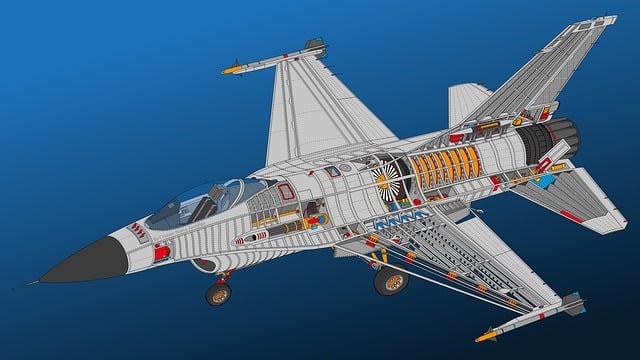The US Army Special Forces (Green Berets), established in 1953, have evolved into crucial, culturally sensitive components of modern US military strategy, excelling in counterterrorism, intelligence gathering, and special operations globally. Their rigorous training equips them with language skills, survival abilities, and specialized combat techniques. Visual narratives, including illustrations and iconic photographs, play a significant role in communicating their complex operations, diverse terrains, and strategic planning, emphasizing the unit's adaptability and skillsets. In the digital age, Special Forces have leveraged modern tools to transform historical narratives into dynamic digital publications, reaching wider audiences globally and fostering understanding of their unique culture and operations.
The US Army Special Forces, often referred to as the Green Berets, have left indelible marks on military history. This article explores their evolution through a historical lens, focusing on how illustrated narratives in army publications have shaped public perception. From iconic images depicting daring operations to modern digital communication, visual storytelling plays a crucial role in documenting and promoting the unique capabilities of the US Army Special Forces.
- The Evolution of US Army Special Forces: A Historical Perspective
- Visual Narratives in Army Publications: The Role of Illustration
- Iconic Images: Depicting Special Forces Operations
- Modern Communication and Illustrated Army Histories
The Evolution of US Army Special Forces: A Historical Perspective

The US Army Special Forces, often referred to as the Green Berets, have undergone a remarkable evolution since their inception in 1953. Initially designed as an elite unit for unconventional warfare during the Cold War era, their role has expanded and adapted over time to meet the changing demands of modern combat. The early years saw the Green Berets engaging in covert operations behind enemy lines, employing specialized skills in counterinsurgency and direct action missions.
Through the decades, the Special Forces have become a cornerstone of US military strategy, known for their versatility and cultural sensitivity. They have been deployed worldwide, from Vietnam to Afghanistan, providing key expertise in counterterrorism, human intelligence gathering, and special operations. This adaptability has been enhanced by an intense training regimen, ensuring that each operator is a master in multiple fields, including language acquisition, survival skills, and specialized combat techniques. The US Army Special Forces continue to be a dynamic and vital component of the American military, embodying agility, innovation, and exceptional operational capability.
Visual Narratives in Army Publications: The Role of Illustration

Visual narratives have always played a significant role in army publications, particularly in conveying complex operations and training regimens. The US Army Special Forces, known for their unconventional warfare expertise, have effectively utilized illustrations to document and share their unique capabilities. These visual aids bring to life intricate tactics, specialized equipment, and the diverse terrains they navigate, making complex information more accessible and engaging.
Illustrations in army histories and manuals offer a dynamic perspective, allowing readers to immerse themselves in the action. They provide a glimpse into the world of Special Forces operators, showcasing their adaptability and skillsets. Whether it’s depicting a stealthy reconnaissance mission or a high-intensity training exercise, these illustrations capture the essence of their work, leaving a lasting impression on both seasoned soldiers and casual readers alike.
Iconic Images: Depicting Special Forces Operations

Iconic images in US Army Special Forces histories and publications often capture the essence of their highly specialized operations. These photographs showcase the unique blend of stealth, precision, and brute force that defines the unit’s capabilities. From covert missions deep behind enemy lines to high-intensity urban combat, the visuals tell a powerful story of courage and adaptability. The images not only highlight the physical prowess of the soldiers but also their intricate training and strategic planning, which are cornerstones of Special Forces operations.
Special attention is given to the intricate details—the camouflage patterns, specialized gear, and tactical formations—all designed to ensure mission success. These iconic pictures serve as a visual narrative, reflecting the unit’s history, global reach, and ongoing relevance in modern warfare. They inspire current and future generations of Special Forces operatives, embodying the spirit of their service and the diverse challenges they face worldwide.
Modern Communication and Illustrated Army Histories

In today’s digital age, communication has evolved exponentially, transforming how military histories are documented and shared. The US Army Special Forces, known for their adaptability and precision, have embraced modern communication tools to enhance their historical narratives. Digital platforms allow for the rapid dissemination of information, ensuring that the experiences and strategies of the Special Forces are not only preserved but also easily accessible to a global audience. This shift from traditional printed materials to digital publications offers a dynamic approach to storytelling, incorporating multimedia elements that bring history to life.
Illustrated army histories, once confined to meticulously drawn maps and photographs, now include interactive graphics, videos, and first-person accounts shared through social media. This modern communication approach not only enriches the reader’s experience but also provides valuable insights into the unique culture and operations of the US Army Special Forces. By leveraging technology, these histories can reach a wider audience, fostering a deeper understanding of their contributions on the global stage.
The US Army Special Forces, with their unique capabilities and distinct history, have left an indelible mark on military narratives. Through the evolution of army publications and histories, illustrated stories have played a pivotal role in documenting and sharing these extraordinary operations. From the early days of hand-drawn maps to modern digital illustrations, visual depictions have enhanced our understanding of Special Forces’ tactical prowess and cultural significance, ensuring their legacy continues to inspire future generations.
